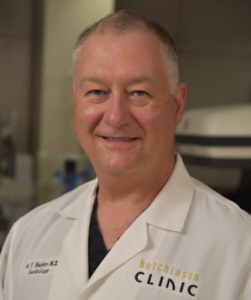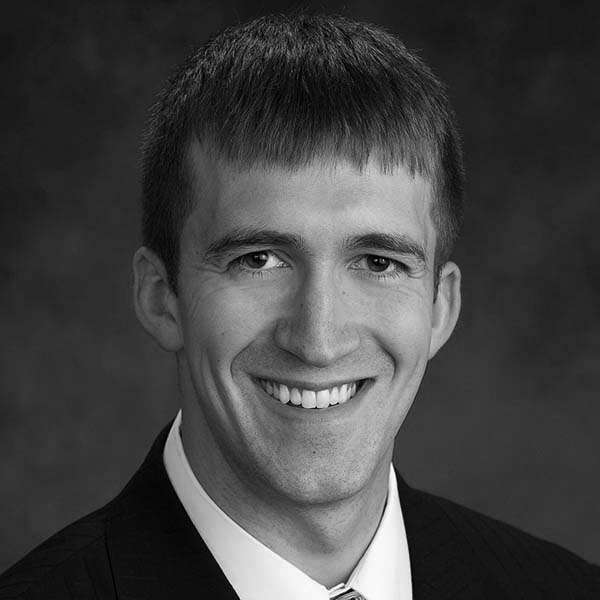During February, Hutchinson Regional Healthcare System (HRHS), joins healthcare organizations nationwide in observance of American Heart Month. Coincidentally, President Lyndon B. Johnson, a heart attack survivor, proclaimed the first American Heart Month in 1964 as one of his first official acts as President.
Johnson’s original proclamation stated the intent of the national observance was to provide a means for Americans to promote and maintain heart health.
I would like to report heart disease declined dramatically during the nearly six decades since the establishment of American Heart Month, but unfortunately, the opposite is true. The American Heart Association states that heart disease is the greatest health threat to Americans and the leading cause of death worldwide for both men and women. The Mayo Clinic states that even though heart disease is on the rise, it does not mean that you have to accept it as your fate. 
The Center for Disease Control (CDC) states that one if every four deaths in the nation is heart related. Every 40 seconds, another American suffers a heart attack. Nearly 660,000 Americans die each year as a result of heart related issues, a statistic that has increased dramatically during the past decade.
Sadly, there are some risk factors to heart disease we cannot change. Who was it that said we are born with our genetics? If a family member was affected with heart disease, there is an increased risk that others will experience the same affliction.
During COVID-19, some people who experienced heart symptoms chose to wait out the pandemic and delay seeing a doctor. At times, this had disastrous consequences. Be assured that cardiologists are available 24/7 if necessary and are ready and available to meet with all heart patients. Our cardiac cath lab unit has maintained mission readiness throughout the pandemic.
For many people, heart disease is preventable by adopting a healthy lifestyle which includes not smoking, maintaining a healthy weight, controlling blood sugar and cholesterol, annual blood pressure checks and setting a goal of 150 minutes of weekly exercise, 75 minutes of which should qualify as vigorous activity.
During the past ten years, the Cardiovascular Unit at Hutchinson Regional has taken steps to provide the same level of care available at other hospitals, large and small, throughout the nation and our efforts have proved successful.
Our Cardiovascular team at Hutchinson Regional is nationally recognized for being among the first in the nation to utilize Federal Drug Administration (FDA) approved procedures and devices within days of their approval. In 2014, Hutchinson Regional was one of the first to successfully use a drug coated balloon to decrease the risk of plaque buildup in leg arteries. Also, our team is a trailblazer in the treatment of Peripheral Arterial Disease (PAD) sometimes referred to as limb salvage. Left untreated, it may result in leg amputation or life-threatening situations.
A common measurement for cardiovascular treatment at health care facilities is “Door to Balloon Time,” which translates to time between the patient’s arrival at the hospital and moment when blood flow is returned to the heart. National accrediting agencies mandate hospitals to provide positive results within 90 minutes. At HRMC, average Door to Balloon time is 58 minutes, less than two thirds of the national benchmark.
It is my good fortune to work every day at Hutchinson Regional with a high caliber group of cardiologists including Dr. Costy Mattar and Dr. Jamil Ahmed. Also, an important member of our team is Dr. Robert Fleming, a cardiothoracic surgeon.
In 1900, a horse and buggy doctor made house calls to treat ailments including the common cold and an attack of appendicitis. Today, the Hutchinson Regional Cardiovascular team travels to area cities for outreach clinics, sometimes seeing 40-50 patients per day.
In presentations throughout the Hutchinson Regional service area, I often tell disbelieving audiences there is no better time to have heart disease than now. What I really mean is that a half century of research and development of devices are now available, which have increased the success rate for heart procedures and longevity of life.
It is never too late for a lifestyle change to improve heart health. During these final days of February, let’s all (myself included) commit to a healthier lifestyle that will reduce cardiovascular issues. Then, one year from now when we observe the next American Heart Month, we will see firsthand the successful results of our changes.
By Dr. Mike Hagley, Interventional Cardiologist and Inter-Cardio Medical Director of Heart & Vascular Lab at Hutchinson Regional Medical Center.




